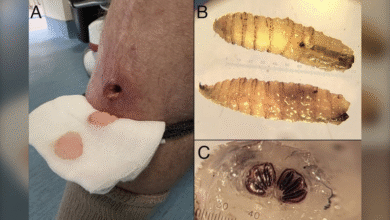Office Chair Butt: How to Combat Muscle Loss at Work

In an era where many of us spend the bulk of our days glued to our desks, “office chair butt” has emerged as a concerning phenomenon for workers everywhere. This term, highlighting the negative effects of a sedentary lifestyle on our glute muscles, reflects the growing dialogue around healthy office habits. Prolonged sitting can lead to muscle atrophy, particularly in the posterior chain, resulting in a flatter backside that many are now proactively seeking to avoid. Experts like Alissa Mosca emphasize the importance of incorporating quick glute exercises throughout the workday to reverse these effects. By integrating these simple movements into our daily routines, we can improve muscle tone and combat the adverse consequences of desk-bound jobs, while also focusing on key ergonomics tips for a healthier workspace.
As workplace dynamics continue to evolve, the challenge of maintaining our physical health while immersed in a sitting job becomes ever more relevant. The term “seated posterior issues” refers to similar concerns surrounding prolonged sitting and its impact on glute strength, emphasizing the need for movement in our daily routines. Many are now awakening to the reality of “butt flattening” as it relates to professional environments, prompting the pursuit of preventative measures against muscle weakness and fat accumulation. Integrating targeted physical activities into our work hours is a vital strategy for countering muscle degradation and promoting better body function. It’s crucial for office workers to not only recognize these issues but also adopt practical solutions that support their physical well-being.
Understanding Office Chair Butt: The Impact of Sedentary Lifestyles
Office chair butt has emerged as a pressing concern in today’s work environments, particularly for those with sedentary lifestyles. As more individuals spend hours sitting at desks, the implications on physical health cannot be ignored. This condition refers to the flattening of the glute muscles, primarily due to prolonged periods of inactivity. When one remains seated for long stretches, the muscles in the posterior chain—particularly the glutes, hamstrings, and lower back—start to weaken, leading to muscle atrophy. Engaging less in activities that contract and activate these muscles means they lose their tone and strength, resulting in a sagging appearance.
Furthermore, the repercussions of office chair butt extend beyond aesthetic concerns. The weakened muscles can cause functional problems, as they play a crucial role in overall movement and posture. When these muscles lose strength, individuals may experience discomfort, imbalance, or even injuries when undertaking basic tasks. Therefore, recognizing the need for proactive measures to counteract the harmful effects of a sedentary lifestyle is vital for anyone spending long hours seated.
Exercises to Combat Office Chair Butt
To effectively address the challenges posed by office chair butt, incorporating glute exercises into your daily routine is essential. Alissa Mosca’s recommendations for simple yet effective movements ensure that workers can activate their glutes, hamstrings, and quads without needing specialized equipment or a dedicated area. For instance, performing bodyweight air squats at your desk not only strengthens the glutes but also boosts overall circulation, making them an ideal quick fix during work hours. Additionally, exercises like lunges or Bulgarian split squats can be integrated seamlessly into one’s day when taking breaks.
By embracing these exercises and adhering to a routine, office workers can positively impact their muscle tone and counteract the effects of prolonged sitting. Mosca’s guidance to perform 12 to 15 reps of selected movements every 45 minutes encourages a more active lifestyle, leading to healthier office habits. It reinforces the idea that regular movement is critical, and by establishing a consistent practice, individuals can stave off muscle atrophy and improve their overall well-being.
Ergonomics and Healthy Office Habits
In tackling the issues surrounding office chair butt, understanding the role of ergonomics is paramount. Ergonomic chair designs can significantly alleviate the consequences of a sedentary lifestyle by encouraging movement and providing proper support for posture adjustments throughout the day. According to Jonathan Puleio, selecting chairs that promote such adjustments can aid in maintaining the integrity of the muscles that are often neglected in traditional office setups. A well-designed chair can help mitigate muscle atrophy and promote better alignment, leading to fewer aches and greater productivity.
Establishing healthy office habits is equally important, as they complement ergonomic solutions. Implementing sit-to-stand workstations allows employees to alternate between sitting and standing, which has been shown to enhance energy levels and minimize the risks of muscle weakening. Simple changes, like taking micro-breaks to stretch or walk, can make a substantial difference in combating the detrimental effects of sitting. By embedding these small yet impactful actions into everyday routines, workers can foster a healthier environment that encourages muscle activity and overall well-being.
The Role of Movement in Muscle Atrophy Prevention
In discussing muscle atrophy prevention, one cannot overlook the relationship between regular movement and muscle health. Prolonged periods of sitting trigger muscle weakening and fat accumulation, as mentioned by Puleio. This reinforces the necessity of integrating movement into one’s workday as a proactive stance against the effects of a sedentary lifestyle. Encouraging employees to step away from their desks, hydrate, or even take short walks has proven beneficial in reversing muscle degradation. This concept is connected to maintaining a balanced body composition and overall health.
Moreover, the benefits of movement extend beyond just combatting office chair butt. Regular activity contributes to improved circulation, mental clarity, and mood enhancement, all of which are essential for productivity in an office environment. Hence, by fostering a culture of movement and prioritizing muscle engagement through simple, regularly performed office exercises, organizations can not only improve the health of their employees but also enhance collective productivity and morale in the workplace.
Incorporating Glute Activation into Your Routine
Incorporating glute activation exercises into your daily routine does not necessitate a comprehensive overhaul of one’s lifestyle. With simple adjustments, individuals can reap significant benefits to counteract the effects of sitting. Educating oneself about the core glute exercises—like lunges or air squats—can help in making these movements habitual. They can be performed discreetly at a desk or during breaks, making fitness accessible even in a demanding work environment.
The key is to make these exercises a natural part of your routine. Setting reminders to perform one to two exercises every hour can shift the focus from sedentary habits to a more active lifestyle. Such practices not only help in strengthening glutes and preventing muscle atrophy but also foster a renewed commitment to health in the workplace, encouraging others to join in on these healthy office habits.
Choosing The Right Office Chair to Prevent Muscle Atrophy
Selecting the right office chair is a foundational step toward preventing muscle atrophy associated with long hours of sitting. Ergonomically designed chairs provide essential lumbar support and promote an active sitting position that encourages minor movements throughout the day. These features help ensure that the glutes and supporting muscle groups stay engaged, reducing the risk of encountering ‘office chair butt.’ With innovations in chair design focusing on mobility and posture, employees are empowered to make healthier choices in their workspaces.
Additionally, as Puleio suggests, utilizing features such as adjustable height and customizable angles can facilitate transitioning between sitting and standing. Chairs that allow for more movement support the engagement of the core and glutes, further combating the effects of prolonged sedentary behavior. Employers can foster a healthier workplace by investing in quality office chairs that emphasize ergonomic benefits, demonstrating a commitment to the well-being of their workforce.
Understanding the Connection Between Fat Accumulation and Sedentary Work
The correlation between fat accumulation and a sedentary work lifestyle is another crucial aspect of the office chair butt phenomenon. As individuals sit for extended periods without adequate movement, not only do they lose muscle tone, but fat tissue can also begin to accumulate, significantly altering body composition. This process leads to a shift in energy levels, physical health, and overall well-being, causing challenges that extend beyond appearance. By recognizing and understanding this connection, individuals can begin to appreciate the importance of moving throughout their workday.
Addressing fat accumulation while at work requires proactive engagement. This can include taking active breaks, incorporating glute and leg exercises, or seeking alternative tasks that encourage movement. Emphasizing education around the long-term effects of a sedentary lifestyle can foster a cultural shift within offices, promoting healthier behaviors that can lead to positive changes in body composition over time.
Strategies for Staying Active During the Workday
Implementing strategies for staying active during the workday is essential for combating the detrimental effects of prolonged sitting. Simple approaches can make a significant difference, such as setting an hourly timer to remind oneself to stand, stretching, or performing quick exercises like squats or lunges. Encouraging employees to take the stairs instead of the elevator or hold walking meetings can create a more dynamic office atmosphere. These habits not only keep the body engaged but also stimulate the mind, enhancing focus and productivity.
Moreover, organizational frameworks that support movement—such as communal workout sessions, group challenges, or walking lunch breaks—can foster camaraderie while promoting health. Small changes, like converting conference calls into walking sessions, can shift the culture toward one that values physical wellness. By empowering individuals with the tools and motivation to stay active, companies can build healthier environments that lead to numerous short-term and long-term benefits for their employees.
The Long-Term Importance of Combatting Office Chair Butt
Recognizing the long-term importance of combatting office chair butt extends beyond immediate aesthetics or discomfort. The consistent neglect of muscle engagement due to sedentary practices can lead to chronic issues over time, including reduced mobility, poor posture, and a greater risk of injuries. As physical activity diminishes, individuals might also face metabolic issues linked to a sedentary lifestyle, increasing the risk of conditions such as obesity or cardiovascular diseases. Thus, investing time and effort in preventative measures early on can yield significant dividends later.
Additionally, the mental health implications of physical activity cannot be overlooked. Regular movement has been shown to reduce stress and anxiety levels, contributing to overall mental well-being. By actively working against office chair butt through consistent workouts, employees could foster a happier and healthier work environment. Overall, promoting a culture of physical activity and implementing effective strategies can pave the way for healthier outcomes, increasing longevity, productivity, and quality of life.
Frequently Asked Questions
What is ‘office chair butt’ and how does it affect my health?
‘Office chair butt’ refers to the flattening and weakening of the glute muscles due to prolonged sitting in an office chair. This sedentary lifestyle can lead to muscle atrophy and increased fat buildup, negatively impacting overall health and posture.
How can I prevent ‘office chair butt’ while working in an office?
To prevent ‘office chair butt’, incorporate glute exercises into your workday, such as air squats, lunges, good mornings, and Bulgarian split squats. Aim to perform these movements every 45 minutes to an hour to keep your muscles engaged and combat the effects of sitting too long.
What are some effective glute exercises to do from my office chair?
Effective glute exercises to incorporate while sitting in your office chair include seated leg lifts and mini squats. These movements can help activate your glutes and prevent muscle atrophy associated with a sedentary lifestyle.
How can I practice healthy office habits to avoid ‘office chair butt’?
Practicing healthy office habits involves utilizing a sit-to-stand workstation, taking micro-breaks to move around, and performing simple glute exercises throughout the day. This helps maintain muscle tone and encourages better posture.
What ergonomic tips can help mitigate ‘office chair butt’?
Ergonomic tips to combat ‘office chair butt’ include adjusting your chair to promote proper posture, using a standing desk periodically, and incorporating movement into your daily routine. This reduces the chances of muscle atrophy and encourages better overall health.
Can sitting too long really cause muscle atrophy in my glutes?
Yes, sitting for extended periods can lead to muscle atrophy in the glutes due to inactivity. Engaging in regular glute exercises and adjusting your work habits can help counteract this effect and maintain strength.
How often should I take breaks from my office chair to avoid ‘office chair butt’?
It is recommended to take breaks every 45 minutes to an hour to avoid ‘office chair butt’. During these breaks, perform glute exercises or simply stand and move around to keep your muscles active.
Are there any specific furniture or tools I should consider to improve ergonomics and prevent ‘office chair butt’?
Yes, consider investing in ergonomic chairs designed to support posture, sit-to-stand workstations, and other tools that promote movement. These can help prevent ‘office chair butt’ by encouraging better alignment and frequent changes in position.
| Key Point | Details |
|---|---|
| Definition of Office Chair Butt | Refers to muscle loss and flattening of the backside due to prolonged sitting. |
| Recommended Exercises | 1. Air Squats 2. Lunges 3. Good Mornings 4. Bulgarian Split Squats |
| Frequency of Movement | Incorporate movement every time you stand up, aiming for 12 to 15 reps of one exercise two to three times a day. |
| Gym Routine Integration | Include kettlebell swings, Smith machine squats, hip thrusts, and incline walking to prevent muscle loss. |
| Impact of Chair Design | Chair design affects posture and movement, with supportive designs helping to combat muscle atrophy. |
| Practical Tips | Utilize sit-to-stand workstations and take frequent micro-breaks to stay active through the day. |
Summary
Office chair butt has become a pressing concern for many office workers due to long hours of sitting. As highlighted by fitness experts, sitting for extended periods can lead to muscle loss and unwanted changes in body shape. To counteract these effects, it’s crucial to engage in specific exercises and maintain active breaks throughout the workday. By incorporating movement into daily routines and utilizing ergonomic furniture, individuals can combat the adverse effects of prolonged sitting and promote better health.




